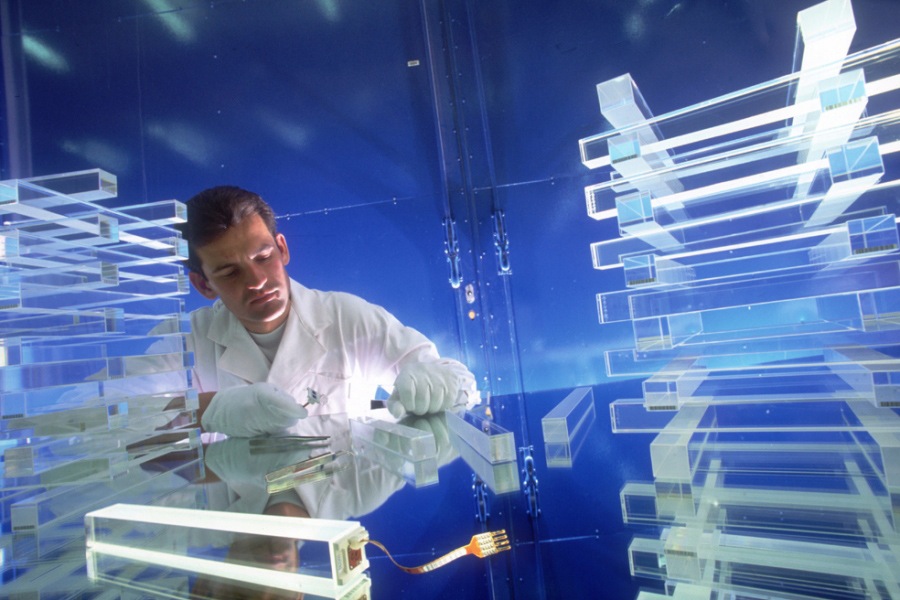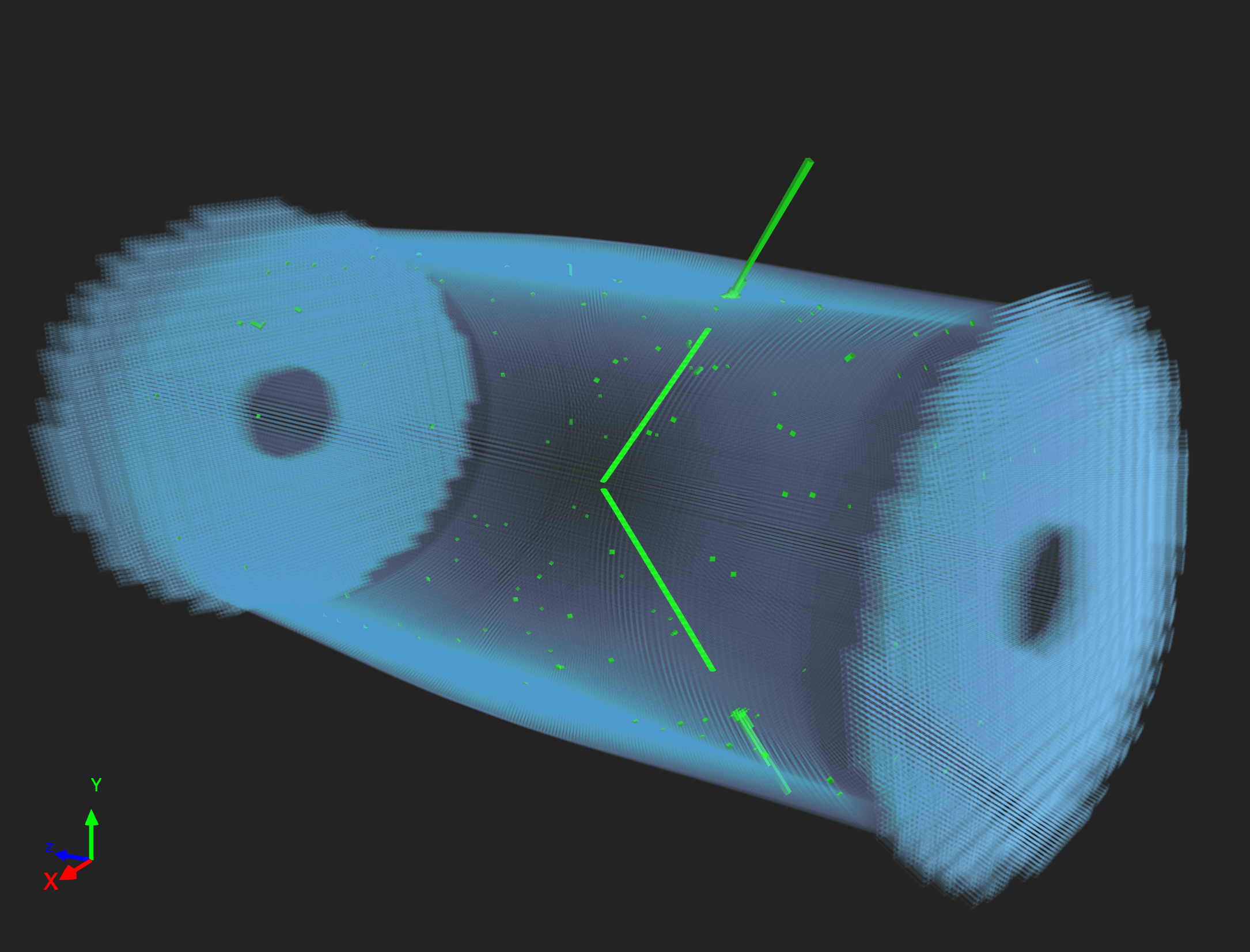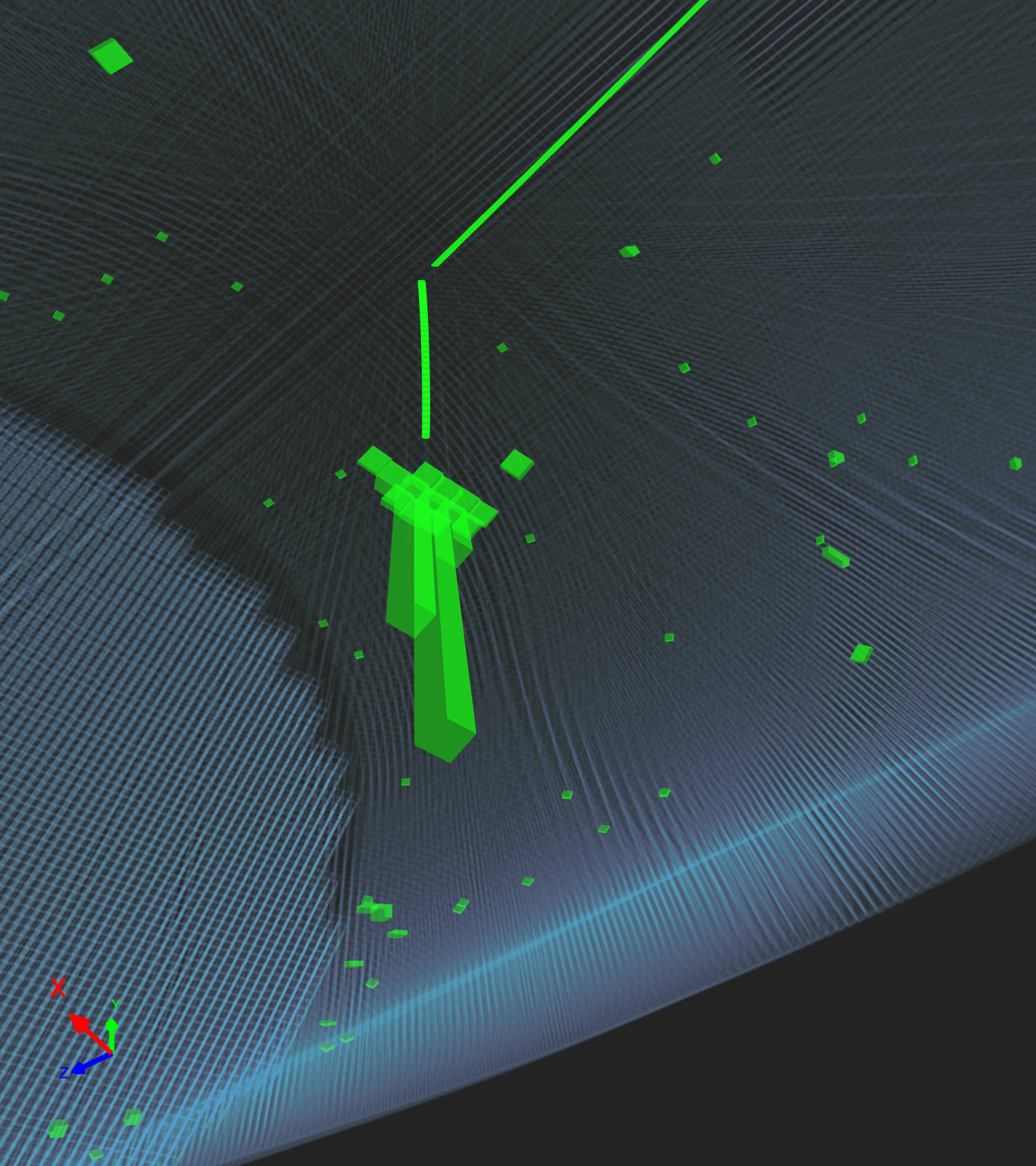Electromagnetic Calorimeter (ECAL)
Last updated on 2024-07-09 | Edit this page
Estimated time: 5 minutes
Overview
Questions
- What is the ECAL?
Objectives
- Learn about the ECAL and how it works.
ECAL

The energies of electrons and photons are measured using the CMS electromagnetic calorimeter (ECAL). Measuring their energies with the necessary precision in the very strict conditions of the LHC - a high magnetic field, high levels of radiation, and only 25 nanoseconds between collisions - requires dedicated detector materials.
Lead tungstate crystal is made primarily of metal and is heavier than stainless steel, but with a touch of oxygen in this crystalline form, it is highly transparent and “scintillates” when electrons and photons pass through it. This means it produces light in proportion to the impinging particle’s energy. These high-density crystals produce light in fast, short, well-defined photon bursts that allow for a precise, fast, and fairly compact detector.
The ECAL, made up of a “barrel” section and two “endcaps”, forms a layer between the tracker and the HCAL. The cylindrical barrel consists of 61,200 crystals formed into 36 “supermodules”, each weighing around three tonnes and containing 1700 crystals. The flat endcaps seal off the barrel at each end and are made up of almost 15,000 more crystals.
Photodetectors, which have been especially designed to work within the high magnetic field, are glued onto the back of each of the crystals to detect the scintillation light and convert it to an electrical signal that is amplified and sent for analysis. Avalanche photodiodes or APDs are used in the the crystal barrel, and vacuum phototriodes (VPTs) for the endcaps.

For extra spatial precision, the ECAL also contains a preshower detector that sits in front of the endcaps. These allow CMS to distinguish between single high-energy photons (often signs of exciting physics) and the less interesting close pairs of low-energy photons.
 |
| 
Above left: An event display of two electron tracks (green lines). The ECAL barrel and endcaps are shown by the blue volumes and especially in the endcaps one can make out individual crystals. The green volumes respresent the energy deposits in the crystals. Right: A close up of the energy deposits in each crystal.
Key Points
- The ECAL is designed to measure the energies of electrons and photons with great precision.
